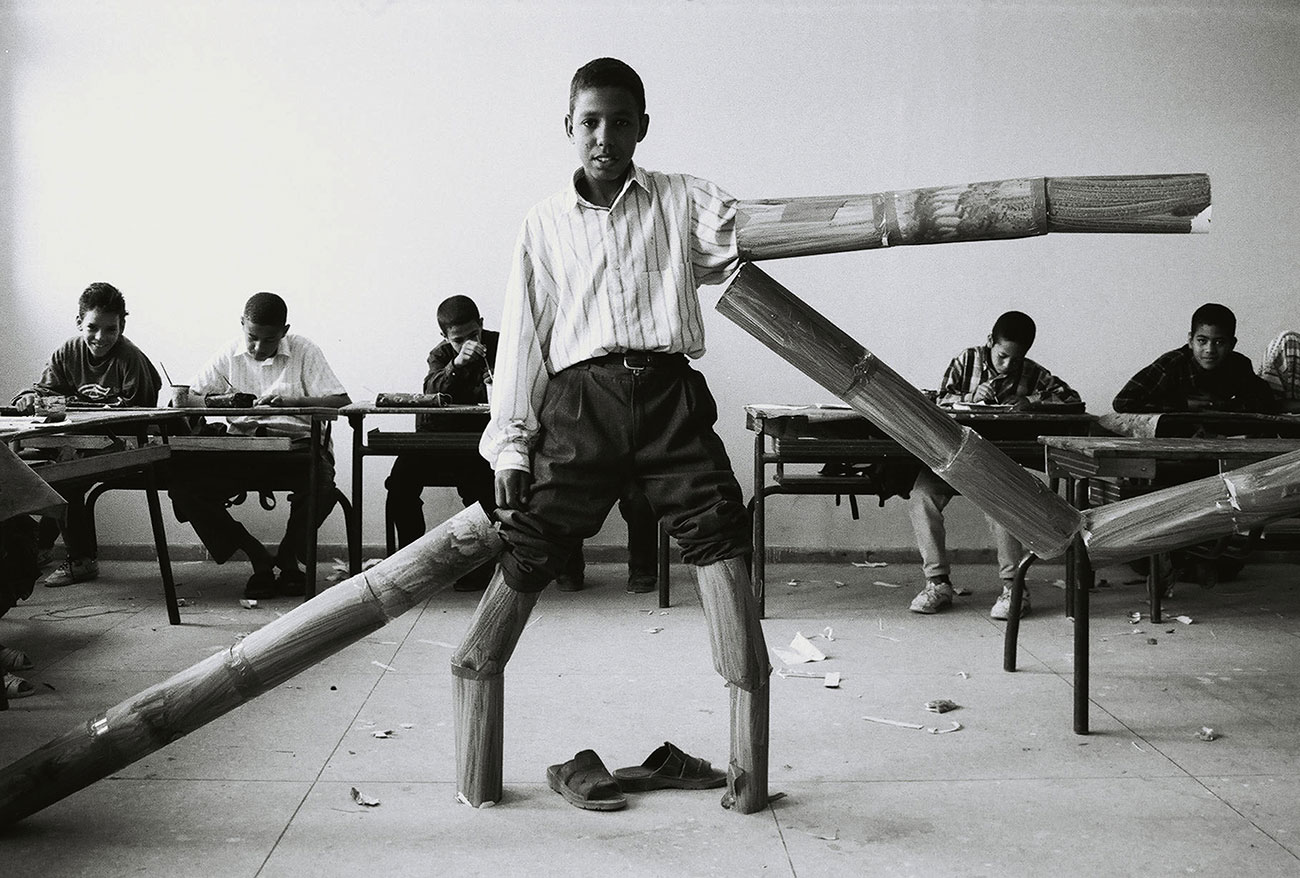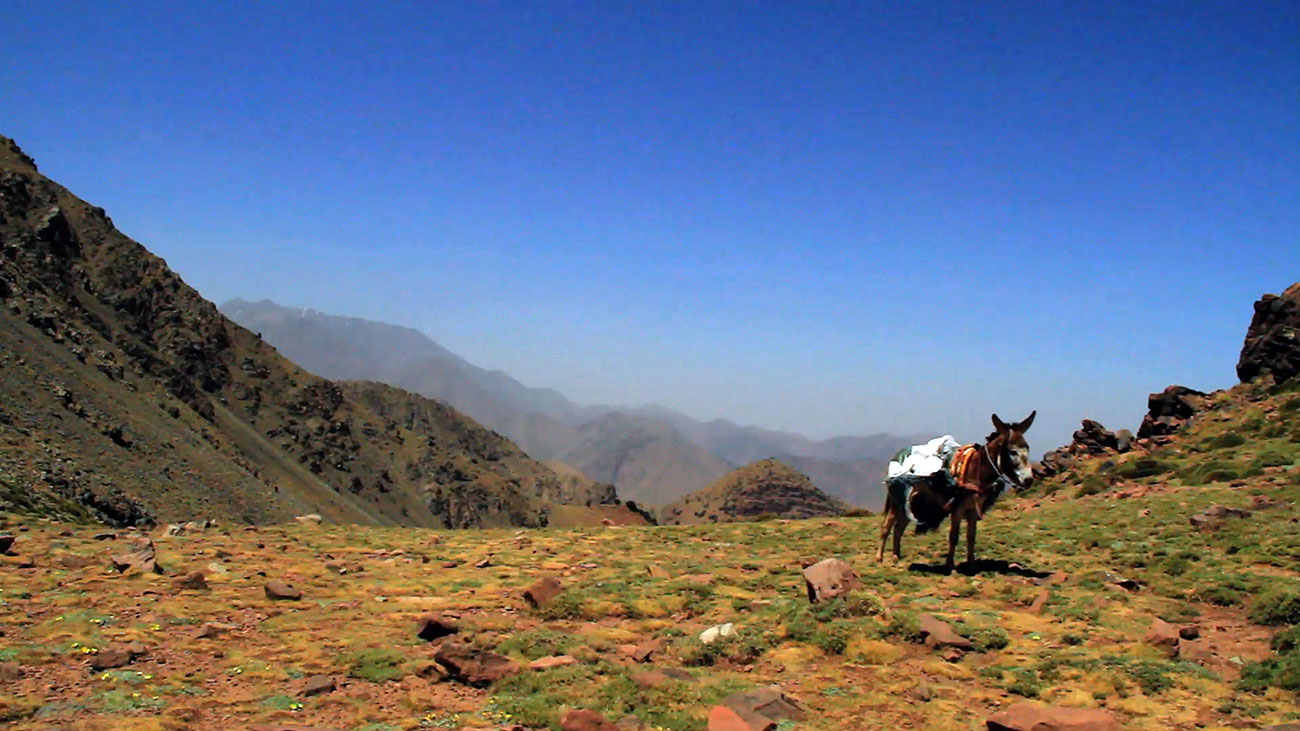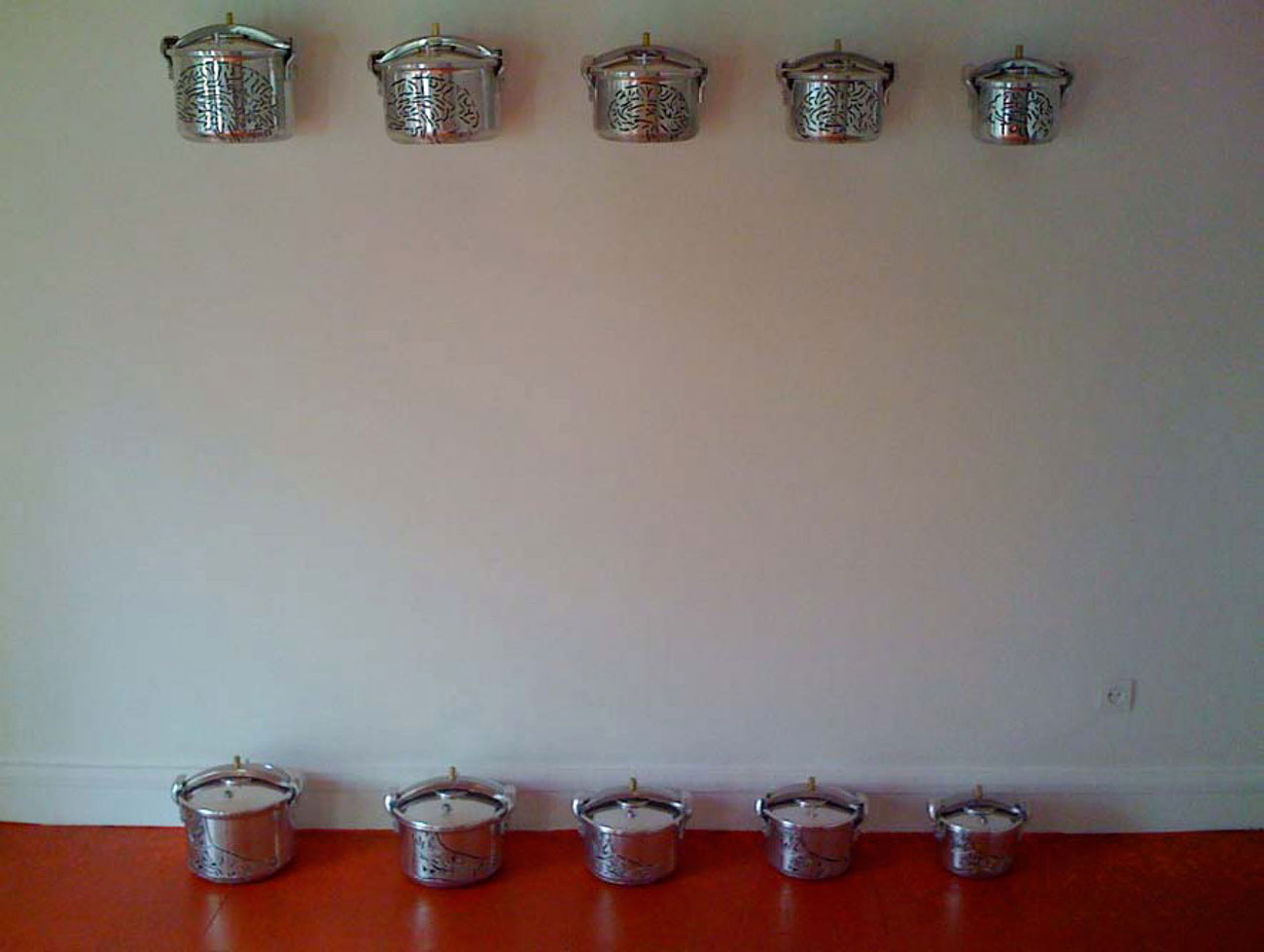Artists in the city
#1 Art at Work
Mucem, fort Saint-Jean—
Fort Saint-Jean Georges Henri Rivière Building (GHR) 320 m2
|
From Friday 14 March 2014 to Monday 2 June 2014
The “Art at Work” exhibition presents works that reflect the socially engaged art currently flourishing in Morocco, throwing into relief the position of the artist in society.
It also reveals, without aiming to be exhaustive, the richness and complexity of one of the most interesting art scenes in the Mediterranean region today.
Since the early 2000s, Moroccans have renewed their desire to give expression to their concerns with regard to the concepts of collective and individual freedoms and the issues that lie at the heart of civic life. The subjects of freedom, power, education and work emerge as key themes for the artists in this exhibition and are central to the Moroccan people’s hopes for a democratic life.
“Art at Work” does not set out to display the weaknesses of the Moroccan social system, weaknesses that can be found all over the world. Rather, it is a journey through the personal visions, arising out of strong convictions, of seven artists who are particularly focused on, and vigilant about, the concerns shared by an entire population.
Curators: Nawal Slaoui, CulturesInterface (Casablanca) et Jean-Roch Bouiller, Mucem
Exhibition design: Struc Archi, Olivier Bedu et Juliette Morel / Graphic design: CL Design
Artists : Mustapha Akrim, Hicham Benohoud, Simohammed Fettaka, Faouzi Laatiris, Youssef Ouchra, Younès Rahmoun, Batoul S’Himi.
Exhibition itinerary
Mirror of history
The vision of the world that the artists share with us has grown out of a long history, traces of which can be seen in the art of today. During antiquity, what is today Morocco was inhabited by various populations – Berber, Phoenician, Carthaginian, Roman, Vandal, Byzantine and Jewish – before being Islamicised by Arabs.
After the 1st century AD, King Juba II reconciled the heritage of the Berber rulers with the protection of imperial Rome. A few centuries later, Idris I founded an independent state in 788, thereby initiating a long dynastic tradition. The Idrisid dynasty saw the creation, in particular, of one of the oldest universities in the world, Al-Karaouine, in Fes, an important centre of knowledge that became a hub of the Arab world in the fields of science, philosophy and theology. Other Berber and then Cherifian dynasties left their imprint on the history of Morocco by helping the tradition of strong royal power to become established and the development of a culture specific to this region, which was on a par with the world’s great cultural centres.
These two thousand years of history led to the emergence of a strong cultural identity while establishing the idea of a supreme, undisputed power, be it that of the monarchy or, at the family level, that of a father or brother. This relationship to power has been an important factor over the centuries, helping to establish the notion of obedience that is a fundamental principle for Moroccans. Today Moroccan people are learning to choose and to decide for themselves, and it is easy to see why this learning process – which is bound up with universal values – has prompted interest, excitement and hope among intellectuals and artists.
The works of socially engaged artists of today are in one sense a reaction to the dark days of the 1970s and 1980s, a period that saw the number of dictatorships increase throughout the world. They reflect a freedom of expression that is relatively young, which endows them with a force, honesty and strength that is not always to be found in the networks of global art. They tackle universal and abstract questions as concrete issues that affect everyday life and ordinary people.


